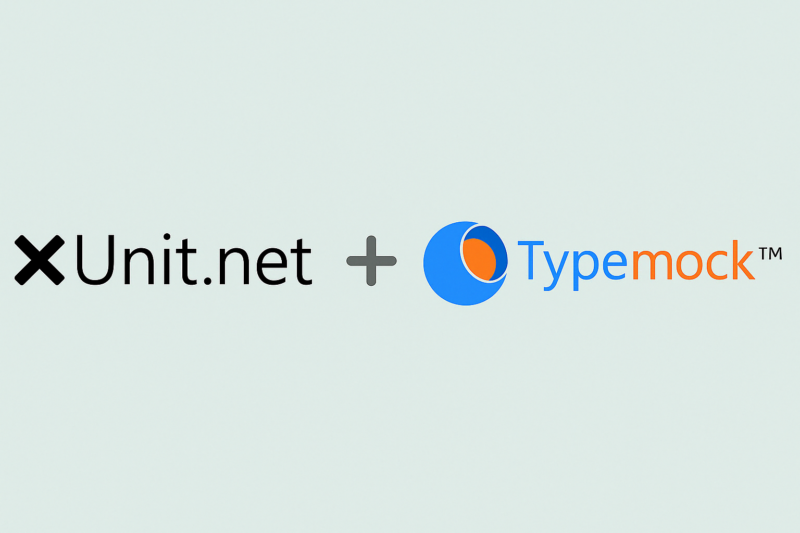The release of xUnit v3 marks a significant milestone for .NET developers. As one of the most popular unit testing frameworks in the .NET ecosystem, xUnit continues to evolve with the needs of modern development. With v3, it brings performance improvements, streamlined features, and a more extensible test runner engine-all while keeping the same clean syntax developers love.
In this blog post, we’ll walk you through what’s new in xUnit v3, how it compares with previous versions, and how to get the most out of it in your .NET projects – including full support in Typemock Isolator.
Why xUnit v3 Matters
xUnit has been a staple of .NET testing for years, known for its simplicity, speed, and extensibility. With v3, it focuses on:
- Improved performance across large test suites
- Modern .NET support (including .NET 8 and beyond)
- Refined extensibility model
- Better isolation and diagnostics for parallel test runs
These improvements make xUnit v3 a top choice for enterprise teams and solo developers alike.
What’s New in xUnit v3?
🔹 .NET 8+ Native Support
xUnit v3 embraces the latest .NET platforms with seamless compatibility and performance tuning.
🔹 Simplified SDK-based Project Structure
No more hacks or config surprises. The new project layout aligns with modern .NET SDK conventions.
🔹 Extensible Runner Model
A new, cleaner model for plugging into test execution, logging, and custom behaviors.
🔹 Better Output & Diagnostic Info
Test failures now offer more actionable context, improving debugging and troubleshooting.
🔹 More Consistent Behavior Across Platforms
xUnit v3 standardizes behavior across Windows, Linux, and macOS – crucial for CI/CD pipelines.
Using Typemock Isolator with xUnit v3
Want to understand the broader context of testing challenges in .NET? Check out our post: Why .NET Unit Testing Feels Hard
Typemock Isolator now fully supports xUnit v3, enabling developers to combine the best of both worlds:
- xUnit’s elegant, attribute-based syntax
- Typemock’s powerful ability to mock anything, including sealed classes, static methods, and private members
- Compatibility with .NET Framework and .NET Core apps
🔧 Example:
|
1 2 3 4 5 6 7 8 9 10 11 12 |
public class MyTests { [Fact] public void Should_Mock_StaticMethod_With_Isolator() { Isolate.WhenCalled(() => LegacyClass.StaticMethod()).WillReturn("Mocked"); var result = LegacyClass.StaticMethod(); Assert.Equal("Mocked", result); } } |
This test runs cleanly with xUnit v3 and gives you the power to test even the most rigid legacy systems.
How to Get Started with xUnit v3
1. Update your project:
Install the latest NuGet package: xunit 3.x
2. Update your runner:
Use the new xUnit v3 test runner or compatible runners for your IDE or CI.
3. Integrate Typemock Isolator:
Ensure Typemock Isolator is referenced in your test project to unlock advanced mocking features.
4. Run and Enjoy:
Benefit from faster test execution, better output, and full flexibility.
Conclusion
xUnit v3 is a welcome evolution of a trusted testing framework, making it easier to test modern .NET applications with speed and confidence.
With Typemock Isolator’s support for xUnit v3, you can now write robust unit tests for even the most difficult code – without sacrificing performance or developer experience.
Looking to deepen your unit testing strategy? Check out Unit Test Patterns for .NET – Part I
👉 Try it out in your next .NET project: Download Typemock Isolator




